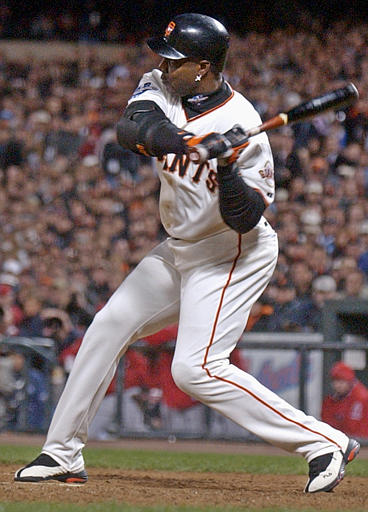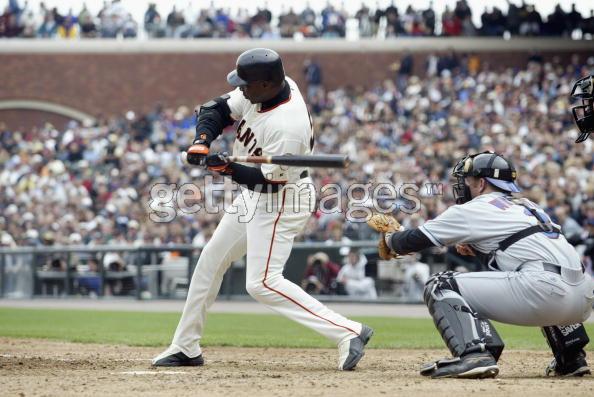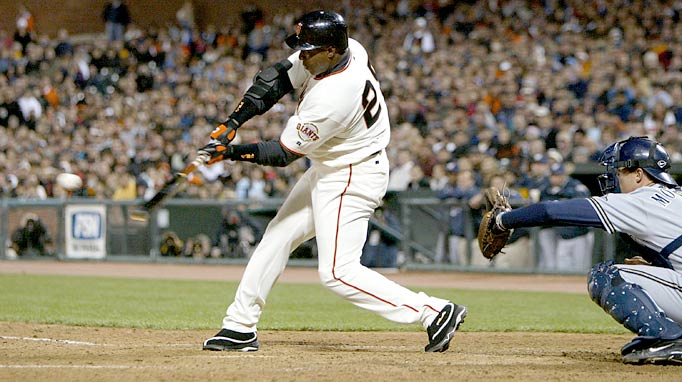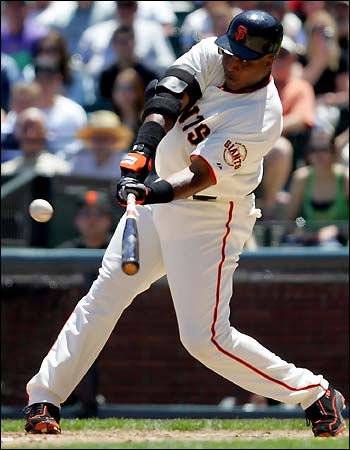You can get "paralysis from analysis", if you get to thinking too much instead
of just doing it.
I think that once you understand WHAT needs to be done, you just have
to figure out your own way of getting it done. I
use the old, "keep the hands back" cue, to mean to me, "keep the hands
at the shoulder." They come away from the shoulder, and to the ball
after rotation starts.
The front elbow must stay bent, at the START, and keep
it bent at least at the start of rotation. It cannot straighten
early. The front elbow needs to rise up to let the hands come through to the ball.
If the elbow does not lift the hands will go down too long and go down across the path of the ball.
The knob of the bat must turn toward the ball initially, but it must then turn up toward the front shoulder.
The old K.I.S.S. (Keep It Simple Stupid) theory is
best;
Cock and lock, the hands into the shoulder area,
turn the
hips,
pivot the knob of the bat,
throw the bathead at the ball.
Of course there are
details and individual preferences of how to set the hands at the shoulder, and
how to turn the hips, etc., but those are details to work on, and each individual
hitter needs to find what works for him, to get those basic moves flowing
together with good rythm and timing.
You have
to figure out, in your own way, how to get to this position below; turn the hips, keep the hands back as you turn;

Hands back at the shoulder, back elbow down, front elbow up, bathead back, hands
cocked, hips are turning ahead of the shoulders. Back shoulder is dropping, and
spine is tilted toward the plate, and the front knee is flexed.
Next
critical postion is this;

Front elbow still up, bat is parallel with the plate, back elbow down and near
the side, back shoulder down and rotating toward the ball, top-hand palm is
horizontal, wrists are STILL cocked. The front leg is begining to
straighten.
If you get to there, the rest is cake. You can then adjust to
the pitch location. If it's in; you keep the front elbow bent, or bend it more
and pull it around. If the pitch is down, or down and away, you let your front
elbow straighten to get the bathead to the ball.
From the above position,
the top hand can apply force to accelerate the bathead into the ball. If the
hands are not set correctly, you can't get any leverage to apply force with the
hand, and they just go for a ride, and don't apply force.
Adjustment
occurs like this;
#661

Or this;
#715

Basically, you start the swing by trying to turn a box, but the box
"breaks", so to speak, as necessary to get to the ball. You just can't
break the box early. You need to get at LEAST to the position in the
first photo, preferrably to the second photo, before you break the box.
And you cannot keep your BACK elbow up while turning the box. The elbow
needs to get down as you turn. The FRONT elbow needs to try and stay
up. You adjust by changing elbow angle and direction. The bulk of the
power is generated from load time, to the position between the first
and second photos. From there it is just a matter of adjusting bathead
direction, and continuing the acceleration through the ball. The "box"
is the shape formed by a line that goes from your front shoulder, to
your elbow, from the elbow to the hands, and an imaginary line from the
hands to the back shoulder.
The swing
starts with hip turn, the arms and hands turn the knob toward the ball as the hips turn,
while the hands are at the armpit. The hands come forward after the hips force the shoulders to rotate.
How you go from your stance to the position
in the first photo can be accomplished in various ways. You need to figure out
which way works for YOU.



